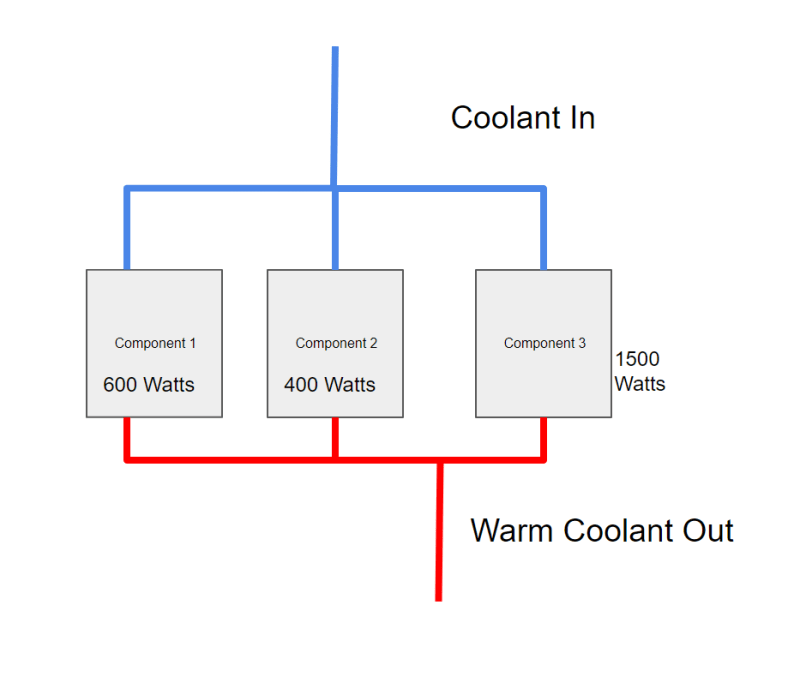SunRise2
Electrical
- Mar 29, 2023
- 3
I am working on sizing the thermal system which cools down 3 components which are enclosed in the same housing. The coolant enters the housing and then splits into 3 branches to take away from the 3 components separately. Once the coolant flows through those 3 components, both branches combines into one branch and the warm coolant then goes into a heat exchanger where it transfers heat to the cooling medium before returning back to the components.
The component ratings are:
Component 1 600 watts
Component 2 400 watts
Component 3 1500 watts
So should I size my thermal system to 1500 watts or 2500 watts?
The thermal system delivers the cold liquid to the heat exchanger to take away heat from the warm coolant.

The component ratings are:
Component 1 600 watts
Component 2 400 watts
Component 3 1500 watts
So should I size my thermal system to 1500 watts or 2500 watts?
The thermal system delivers the cold liquid to the heat exchanger to take away heat from the warm coolant.

